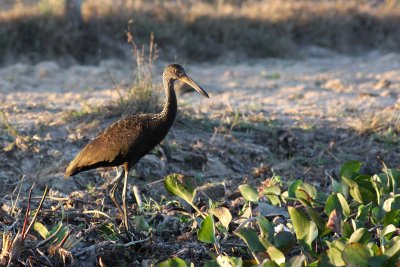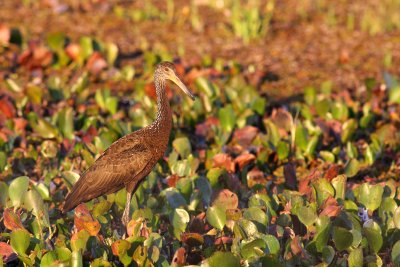Ostriches
|
Rheas
|
Tinamous
|
Screamers
|
Ducks, Geese & Swans
|
Megapodes
|
Chachalacas, Currassows & Guans
|
Guineafowl
|
Pheasants & Allies
|
Flamingos
|
Grebes
|
Turacos
|
Bustards
|
Cuckoos
|
Mesites
|
Sandgrouse
|
Pigeons, Doves
|
Hoatzin
|
Limpkin
|
Cranes
|
Finfoots
|
Flufftails
|
Rails, Crakes & Coots
|
Stone-curlews, Thick-knees
|
Egyptian Plover
|
Stilts & Avocets
|
Ibisbill
|
Oystercatchers
|
Plovers
|
Jašanas
|
Sandpipers & Snipe
|
Buttonquail
|
Crab-plover
|
Coursers and Pratincoles
|
Skuas
|
Auks
|
Gulls, Terns & Skimmers
|
Sunbittern
|
Tropicbirds
|
Loons
|
Penguins
|
Albatrosses
|
Southern Storm Petrels
|
Northern Storm Petrels
|
Petrels, Shearwaters, Diving Petrels
|
Storks
|
Frigatebirds
|
Gannets & Boobies
|
Cormorants, Shags
|
Ibises & Spoonbills
|
Shoebill
|
Hamerkop
|
Pelicans
|
Herons, Bitterns
|
Nightjars
|
Potoos
|
Frogmouths
|
Owlet-nightjars
|
Treeswifts
|
Swifts
|
Hummingbirds
|
Barn Owls
|
Owls
|
New World Vultures
|
Secretarybirds
|
Ospreys
|
Kites, Hawks & Eagles
|
Mousebirds
|
Cuckoo-roller
|
Trogons
|
Hoopoes
|
Wood Hoopoes
|
Hornbills
|
Ground Rollers
|
Rollers
|
Bee-eaters
|
Motmots
|
Kingfishers
|
Jacamars
|
Puffbirds
|
Asian Barbets
|
African Barbets
|
New World Barbets
|
Toucans
|
Honeyguides
|
Woodpeckers
|
Seriemas
|
Caracaras, Falcons
|
Cockatoos
|
African & New World Parrots
|
Old World Parrots
|
Asities
|
Grauer's Broadbill and Asian Broadbills
|
African and Green Broadbills
|
Sapayoa
|
Pittas
|
Manakins
|
Cotingas
|
Tityras and Allies
|
Sharpbill
|
Tyrant Flycatchers and Allies
|
Crescentchests
|
Gnateaters
|
Antbirds
|
Antpittas
|
Tapaculos
|
Ovenbirds
|
Bowerbirds
|
Australasian Wrens
|
Spotted Elachura
|
Gerygones, Thornbills, Scrubwrens, and Allies
|
Honeyeaters
|
Jewel-babblers, Quail-thrushes
|
Cuckooshrikes
|
Woodswallows, Bellmagpies and Allies
|
Ioras
|
Bushshrikes and Allies
|
Wattle-eyes & Batises
|
Vangas, Helmetshrikes and Allies
|
Whipbirds and Wedgebills
|
Shrike-babblers, Erpornis and Vireos
|
Old World Orioles
|
Whistlers & Allies
|
Fantails and Silktails
|
Drongos
|
Monarchs
|
Ifrit
|
Birds-of-Paradise
|
Shrikes
|
Crows, Jays and Magpies
|
Rockjumpers
|
Australasian Robins
|
Fairy Flycatchers
|
Hyliotas
|
Penduline Tits
|
Tits, Chickadees and Titmice
|
Bearded Reedling
|
Larks
|
Nicators
|
Longbills, Crombecs and Allies
|
Cisticolas and Allies
|
Reed Warblers and Allies
|
Donacobius
|
Malagasy Warblers and Tetrakas
|
Grasshopper Warblers, Grassbirds and Allies
|
Cupwings
|
Swallows
|
Hylias
|
Tit-warblers, Bushtits and Long-tailed Tit
|
Bush Warblers and Allies
|
Leaf Warblers
|
Bulbuls
|
Sylviid Warblers and Allies
|
Parrotbills and Allies
|
White-eyes, Yuhinas and Allies
|
Tree Babblers, Scimitar Babblers and Allies
|
Ground Babblers and Allies
|
Laughingthrushes & Allies
|
Waxwings
|
Hypocolius
|
Kinglets
|
Wallcreeper
|
Nuthatches
|
Treecreepers
|
Wrens
|
Oxpeckers
|
Mockingbirds and Thrashers
|
Rhabdornis, Starlings and Mynas
|
Dippers
|
Thrushes and Allies
|
Chats, Old World Flycatchers and Allies
|
Sugarbirds
|
Flowerpeckers
|
Spinderhunters and Sunbirds
|
Leafbirds
|
Weavers and Allies
|
Whydahs and Indigobirds
|
Munias, Parrotfinches, Waxbills and Allies
|
Accentors
|
Snowfinches and Old World Sparrows
|
Wagtails and Pipits
|
Finches, Euphonias and Allies
|
Longspurs and Snow Buntings
|
Old World Buntings
|
New World Sparrows
|
New World Blackbirds, Troupials and Allies
|
New World Warblers
|
Cardinals and Allies
|
Mitrospingid Tanagers
|
Tanagers and Allies
|
Non Passerines
|
Suboscine Passerines
|
Passerines
|
Woodshrikes
|
Woodswallows
Limpkin

Limpkin (Aramus guarauna) |

Limpkin (Aramus guarauna) |
click on thumbnails for full image











